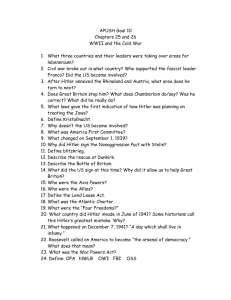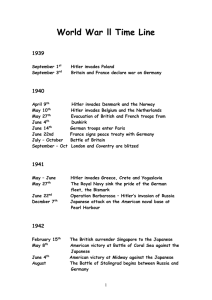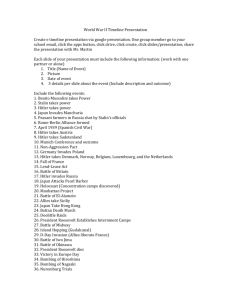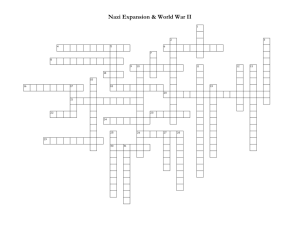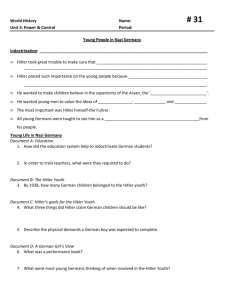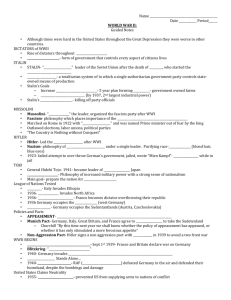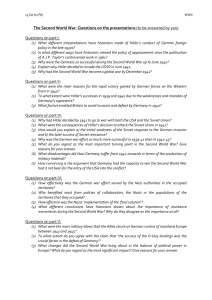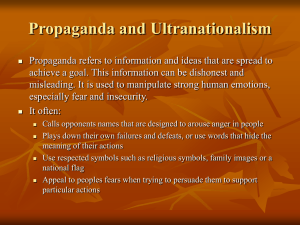GHSGT Social Studies Review Questions #4
advertisement
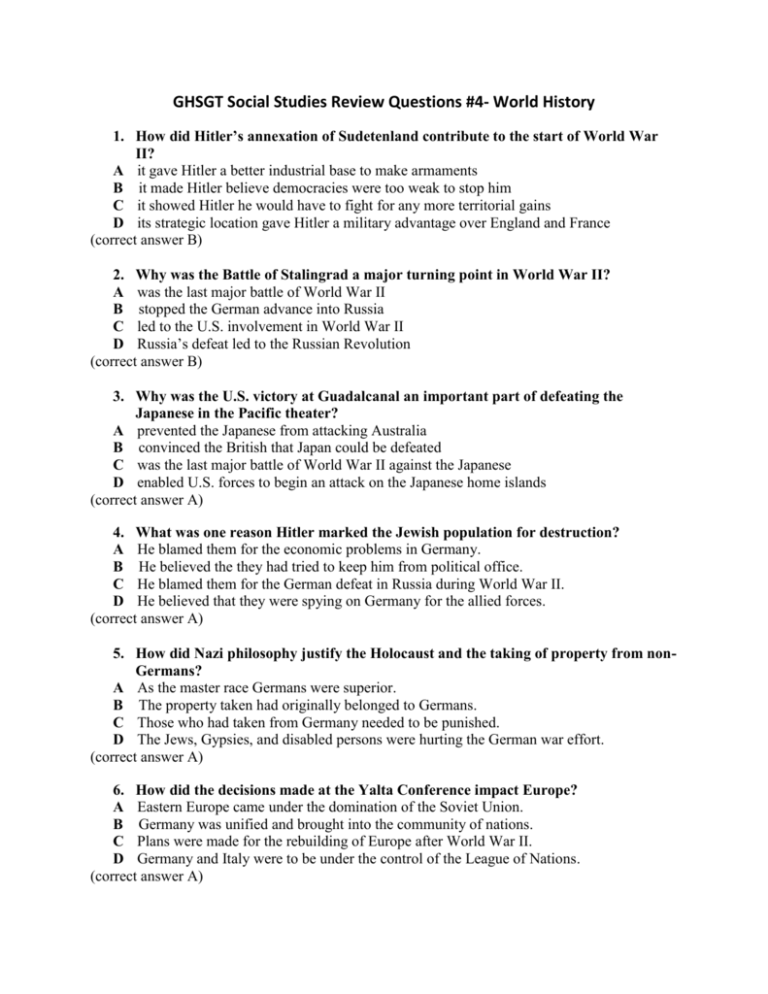
GHSGT Social Studies Review Questions #4- World History 1. How did Hitler’s annexation of Sudetenland contribute to the start of World War II? A it gave Hitler a better industrial base to make armaments B it made Hitler believe democracies were too weak to stop him C it showed Hitler he would have to fight for any more territorial gains D its strategic location gave Hitler a military advantage over England and France (correct answer B) 2. Why was the Battle of Stalingrad a major turning point in World War II? A was the last major battle of World War II B stopped the German advance into Russia C led to the U.S. involvement in World War II D Russia’s defeat led to the Russian Revolution (correct answer B) 3. Why was the U.S. victory at Guadalcanal an important part of defeating the Japanese in the Pacific theater? A prevented the Japanese from attacking Australia B convinced the British that Japan could be defeated C was the last major battle of World War II against the Japanese D enabled U.S. forces to begin an attack on the Japanese home islands (correct answer A) 4. What was one reason Hitler marked the Jewish population for destruction? A He blamed them for the economic problems in Germany. B He believed the they had tried to keep him from political office. C He blamed them for the German defeat in Russia during World War II. D He believed that they were spying on Germany for the allied forces. (correct answer A) 5. How did Nazi philosophy justify the Holocaust and the taking of property from nonGermans? A As the master race Germans were superior. B The property taken had originally belonged to Germans. C Those who had taken from Germany needed to be punished. D The Jews, Gypsies, and disabled persons were hurting the German war effort. (correct answer A) 6. How did the decisions made at the Yalta Conference impact Europe? A Eastern Europe came under the domination of the Soviet Union. B Germany was unified and brought into the community of nations. C Plans were made for the rebuilding of Europe after World War II. D Germany and Italy were to be under the control of the League of Nations. (correct answer A) 7. What was the primary purpose of the Potsdam Conference? A to develop the strategy for the defeat of Japan B to correct problems with the League of Nations C to finalize the plans for post-World War II Germany D to plan for the rebuilding of Europe after World War II (correct answer C) 8. Why did the United States decide to fund rebuilding Europe under the Marshall plan? A to stop the spread of communism B to keep Nazi ideology from spreading C to develop markets for the new industries in the U.S. D to encourage the development of new industries in Europe (correct answer A) 9. How was the post-World War II plan for Japan different from that for Europe? A Japan had to use its own money to rebuild its industry. B Japan’s rebuilding was under the control of the U.S. Army. C Japan continued to maintain a large combat army and navy. D Japan’s government leaders were not punished for World War II. (correct answer B) 10. What was the ultimate consequence of the religious issue in Indian independence? A continuous civil war since independence B independence was delayed for many years C two countries were formed, India and Pakistan D the British granted independence to only part of India (correct answer C)

